The MPIWG invites artists to work on their projects within a scholarly context and bring them into contact with researchers at the Institute. Artists are personally invited by Directors and Research Group Leaders.
Artists in Residence
Alumni
-
Lucy Beech (2020–2022)
Lucy Beech is an artist whose practice encompasses filmmaking, writing and performance. She joins Department III's Working Group "Out of Place, Out of Time" as an artist fellow (2020–2022). Her current research project focuses on the social, cultural, and ecological implications of managing reproduction. The project will manifest as a series of films that play with conventions of portraiture; set during the current digital revolution in livestock farming where human interpretation of animal sexual behaviors, critical to fertility programming is being replaced by predictive models and "living systems" supported by big data and artificial intelligence. The series of films explore the shifting role that human observation and interpretation serves in the context of animal breeding. Blending reconstructed scenes and documentary material, these works embody changing social dynamics and industry practices for interpreting animal sexuality whilst posing tender questions such as how are affects like desire or pleasure conceptualized in different contexts for different bodies and what role does animality play in the understanding of human reproduction as well as in forming ideas about and constructing gender and sexuality.
As part of this research Beech is working with Tamar Novick on a collaborative writing project included in "Bovine Regimes: Body Work, Intimacy, and Knowledge." The outcome of this collaboration will go on to form the script for a performative lecture at SALT Beyoğlu, Istanbul and later inform aspect of Beech’s screenplay. This project explores the historical study of "freemartinism"; commonly referred to as a gender developmental disorder that produces intersex calves born co-twin to a male. Focusing on the entanglement of freemartinism with the historical study of human endocrinology, they investigate what incentives great efforts to transform the freemartins genetic infertility into a knowledge producing biotechnology. Based on analysis of industrial farming manuals, scientific publications, discourse analysis of farmers blogs, and "analogue" and "digital heat" detection systems, this collaborative project explores intimate bodily arrangements and contends gender norms in contexts where standards of work, and waste-use and natural-artificial boundaries are repeatedly blurred and reestablished.
Forthcoming and recent presentations of Beech's film and performance work include "The Madre, museo d'arte contemporanea Donnaregina Madre," Naples, "SALT Beyoğlu," Istanbul in collaboration with Cooking Sections and Kunstverein GartenHaus Vienna (all 2021); Biennial Matter of Art Czech Republic (2020); Extra City Kunstal, Antwerp (2019); Lafayette Anticipation, Paris; Tramway, Glasgow; De La Warr Pavilion (2018); Tate Britain, London (with Edward Thomasson 2017), and the Liverpool Biennial (2016).
-
 Karolina Sobecka (2021–23)
Karolina Sobecka (2021–23)Karolina Sobecka is an artist and researcher whose work is centered on the relationship between environmental concerns and science and technology development. Her projects explored the histories of ecology and their legacies in the contemporary formulations of carbon governance. One of the questions driving Karolina’s research was how artistic methods could be used outside of the art context towards socially just ends such as the repair of the environmental degradation of the planet. Through her projects, Karolina participated in and instigated interdisciplinary collaborations, often in the settings of science and policy. Karolina’s artwork has been shown internationally, and has received numerous awards, including from Creative Capital, New York Foundation for the Arts, Princess Grace Foundation, Eyebeam, Rhizome, and Vida Art and Artificial Life Awards.
-
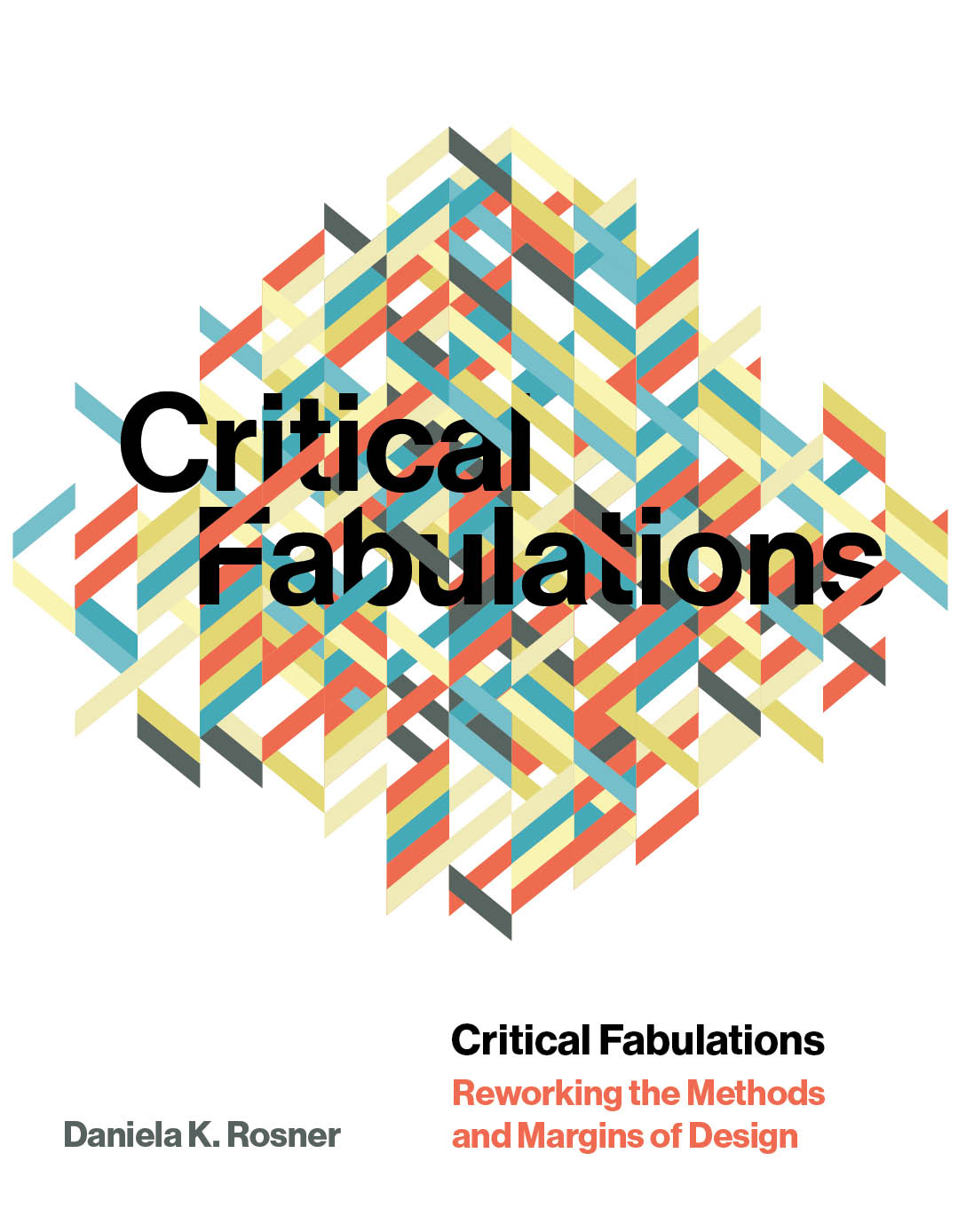 Daniela K. Rosner (2019–20)
Daniela K. Rosner (2019–20)Daniela K. Rosner was an Artist in Residence in Department III, Visiting Scholar at Humboldt University, and is an Associate Professor of Human Centered Design and Engineering at the University of Washington. She also co-directs the TAT Lab. During her time at the MPIWG she worked on the project "Critical Fabulations: Reworking the Methods and Margins of Design" as part of the research theme Histories of Planning.
-
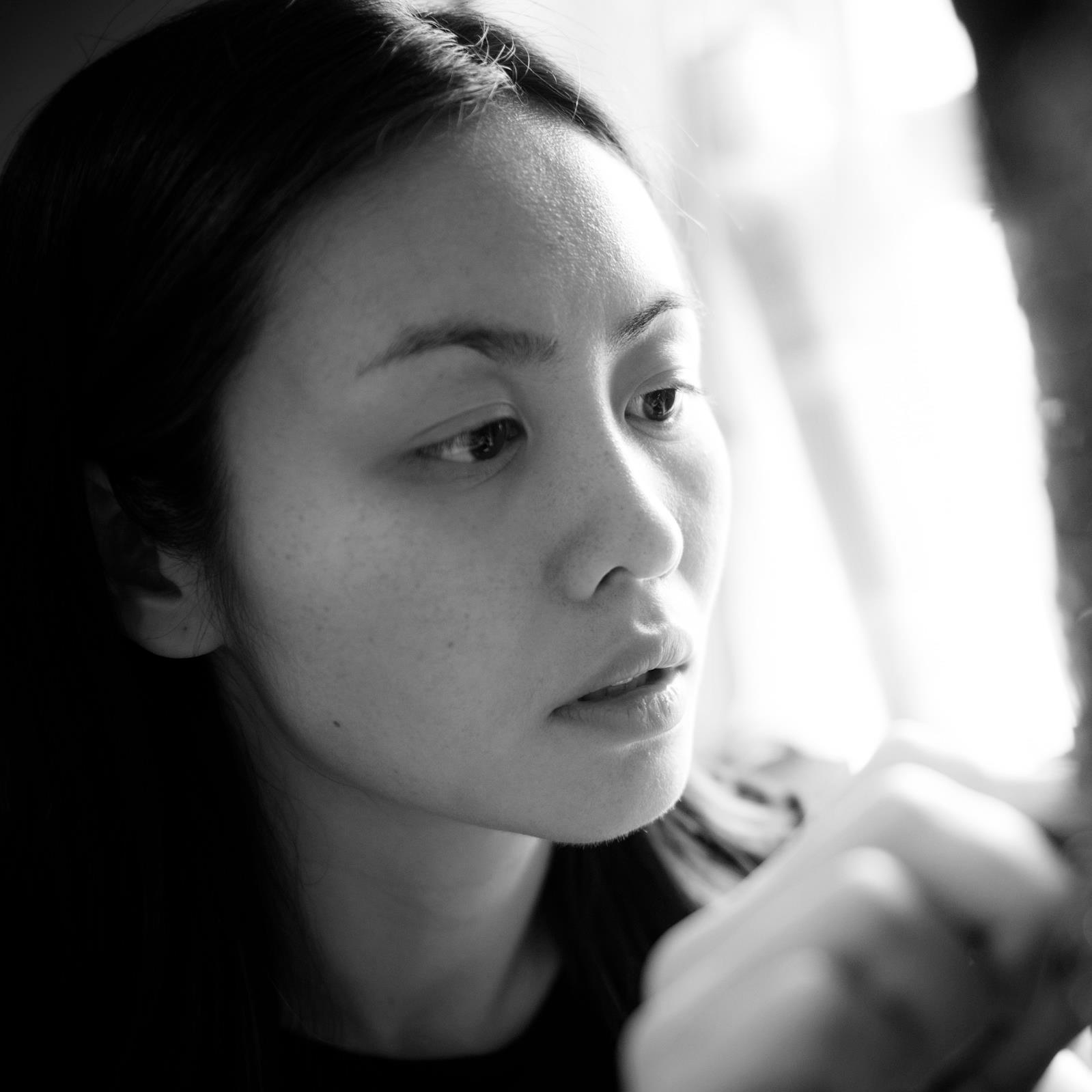 Vivian Xu (2019)
Vivian Xu (2019)Beijing-born Vivian Xu is a media artist and researcher based in Shanghai. In 2013, she received her MFA in Design and Technology from Parsons the New School for Design. Her work explores the boundaries between bio and electronic media in creating new forms of machine logic, life and sensory systems, and often take the form of object, installation and/or wearable. She has shown, lectured, and performed at various institutions in China, the US, Germany, and Australia, including the National Art Museum of China, the Central Academy of Fine Art, the China Academy of Art, the Chronus Art Center, the Rockbund Museum, the Shanghai Symphony Orchestra, the New York Science Museum, Gallery Ho, the Art Laboratory Berlin, and SymbioticA at the University of Western Australia.

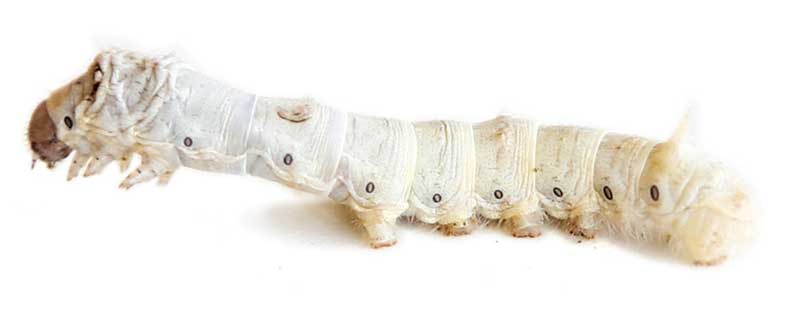
Vivian co-founded Dogma Lab, a trans-disciplinary design lab in Shanghai that is dedicated to creating experimental research at the intersection of design, technology, art, and science. She has lectured at various universities and programs, among them Shanghai Tech University, Chinese University of Hong Kong Shenzhen Campus, and the Roy Ascott Technoetic Arts program. Her work has been featured in media and press, including a documentary series by VICE China, Elle US, and the China Global TV English Channel.
Her project in Department III is an artist book of her bio machine art series "The Silkworm Project," working closely with Lisa Onaga and the Art Laboratory, Berlin. The piece was shown in an exhibition alongside "The Silkworm Project" series at Art Laboratory Berlin.
-
 GeisslerSann (2019)
GeisslerSann (2019)Beate Geissler’s and Oliver Sann’s work concentrates on inner alliances of knowledge and power, their deep links in western culture, and the escalation in and transformation of human beings through technology. In Department I, the artists worked on their most recent project “Hopium Economy.” The project seeks to narrate a larger context for the currently ongoing opioid crisis now bearing down on Midwestern USA, tracing its origins not simply to addiction and dereliction, but instead drawing out how this cycle of dependency, depression, and despair arises from a nexus of factors playing out over public health systems, rural and urban divides, pharmaceutical industries, racial tensions, colonialized monopoly, and de-industrialization.
Beate and Oliver’s work has been exhibited nationally and internationally in museums, galleries, and alternative spaces, including: the Renaissance Society at the University of Chicago; the Museum of Contemporary Photography, Chicago; the Fotomuseum Antwerp; the NGBK (New Society for Visual Arts) in Berlin; the National Taiwan Museum of Fine Arts; the Fotomuseum Winthertur in Switzerland; the Museum Ludwig in Cologne; MAST Foundation in Bologna, Italy; and the German Pavillion at the Photography Biennial Dubai, UAE. They have received a number of grants and awards, including the Videonale Award from the Museum of Art, Bonn, Germany; the Hermann-Claasen-Award (Cologne, Germany); a production grant from the Graham Foundation, Chicago; and a Humanities without Walls grant.
Beate Geissler is an Associate Professor of art at the University of Illinois at Chicago and Oliver Sann is an Associate Professor of photography at the School of the Art Institute of Chicago.
-
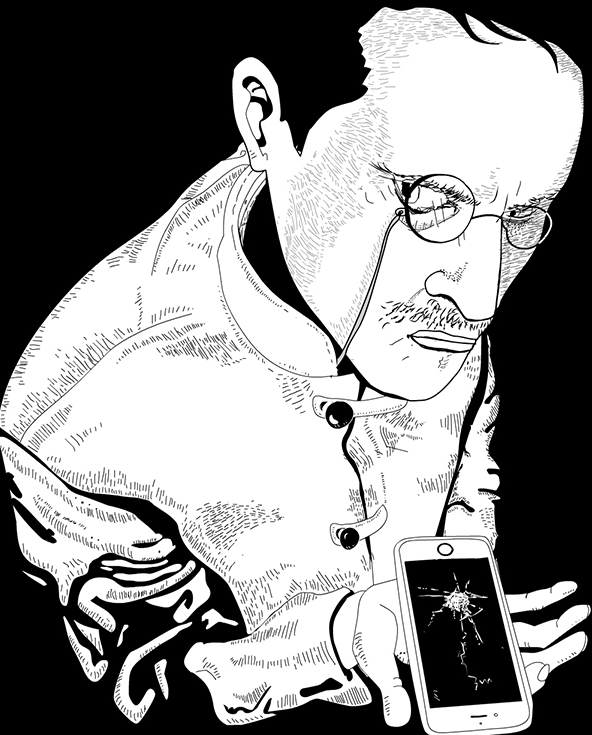 Tal Halpern (2018)
Tal Halpern (2018)Tal Halpern, an illustrator, animator, and multimedia developer, was an Artist-in-Residence in Department II. His visual and literary works have been featured in numerous venues both on-line and off, including Sundance Film Festival, Iowa Review Web, Zentrum fur Kunst und Medientechnologie Karlsruhe (ZKM), and Turbulence.org, New Radio and Performing Arts, The Center for Book Arts, Eclectica Magazine, and the Cortland Review. At the Institute he worked on the project "Smartness," a graphic novel written in collaboration with Orit Halpern. It tells the story of the eclectic group of dreamers who reconfigured our circuits, re-envisioned our brains, and rewired our machines to create new forms of intelligence.
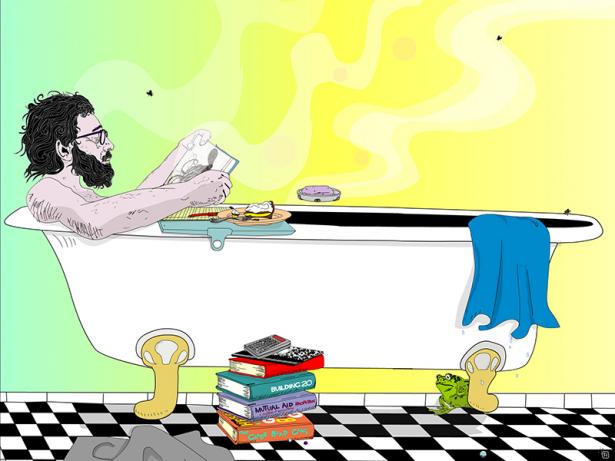
Jerome Lettvin reading in the bathtub circa 1966. © Tal Halpern
-
 Raviv Ganchrow (2016)
Raviv Ganchrow (2016)Raviv Ganchrow was Artist-in-Residence in the Research Group “Epistemes of Modern Acoustics” in 2016. Raviv completed his architectural studies at the Cooper Union, New York in 2000, and received a second degree from the Institute of Sonology at The Royal Conservatory, The Hague in 2004. His project “Padded Sounds: The Latent Aurality of Anechoic Chambers” focused on the latent aurality of anechoic chambers.
-
 Ana María Gómez López (2016)
Ana María Gómez López (2016)Ana María Gómez López was Artist-in-Residence in Department II in 2016. Her research at the MPIWG focused on visual representations of taphonomy—the study of natural forces that affect a biological organism after death.
Her exhibition "The Passage of Nature" was a four-piece installation based on taphonomy—the study of physical forces that integrate organic remains into a surrounding environment or preserve them as fossils across geological time. Each piece references photography and printed matter produced by Johannes Weigelt (DE) and Ivan Efremov (former USSR), paleontologists whose individual work initially defined this area of inquiry in the first half of the 20th century. The specific images represented, the processes chosen for their printmaking, and their precise placement within the MPIWG library all relate to particular moments in the early development of this field. The fragility of the images and their installation presents taphonomy as an invisible collection of fragments—animal and plant remains both from the immediate present to the distant past—as well as a discipline formed through the accrued observation of these ephemeral moments.
Photo credit: Marcus Lieberenz
-
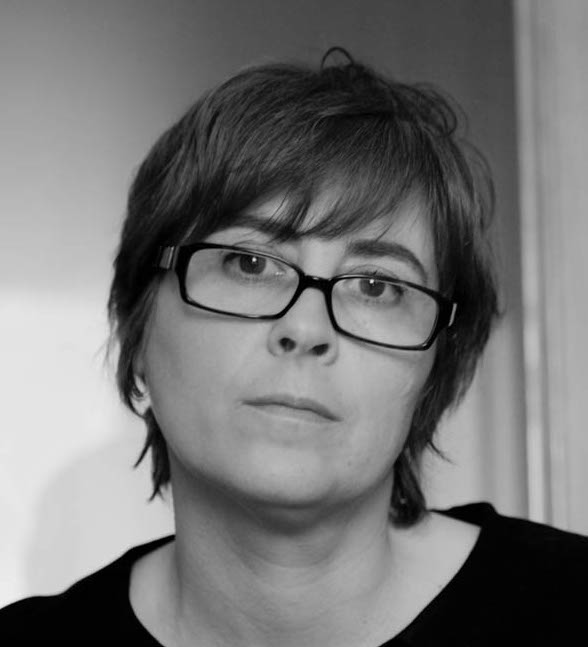 Montserrat de Pablo (2015)
Montserrat de Pablo (2015)Our 2015–2016 exhibition, “On the Camera Obscura: The Obsession with Capturing Images,” was based on Montserrat de Pablo’s research on the camera obscura, carried out at the MPIWG during her time as a Department I Artist-in-Residence and Visiting Research Scholar in 2013, 2014, 2015, and 2016.
Montserrat de Pablo’s doctoral thesis, “The History of the Camera Obscura as a Prehistory of Photography” (2014), surveyed the camera obscura’s evolution in the Western world. She has created a timeline to provide a global overview, and as her work is also based on the selection and compilation of documentary sources, she has also produced a database with illustrations related to the camera obscura.
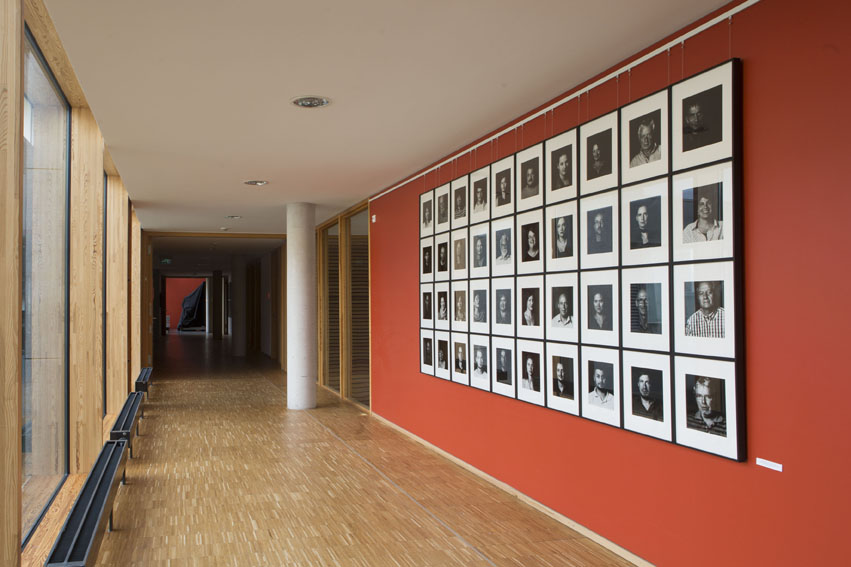
Exhibition at the MPIWG, 2015.
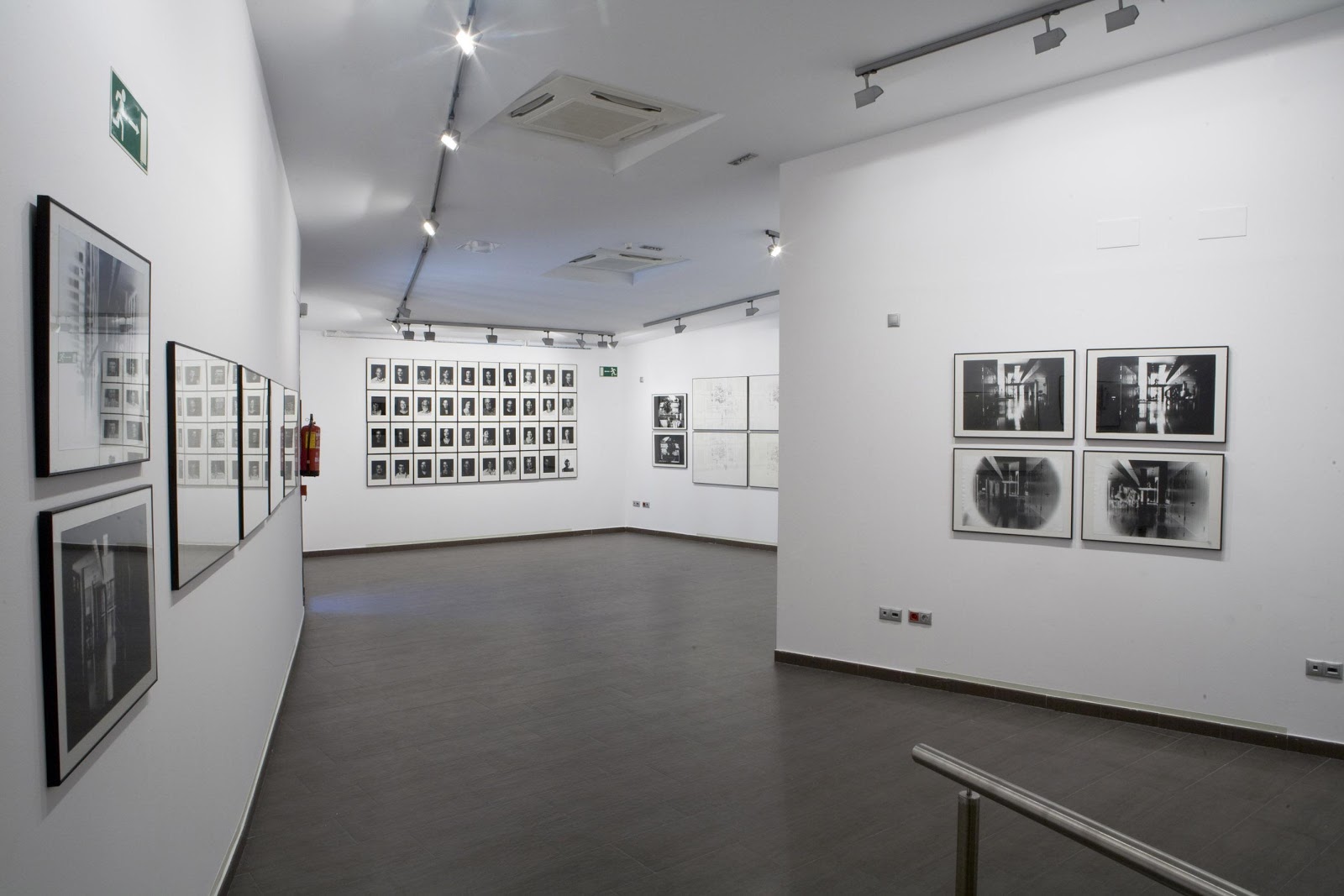
View of Montserrat de Pablo’s La Camara Oscura exhibition. University of Castilla-La Mancha, Cuenca, Spain. May–June 2015.

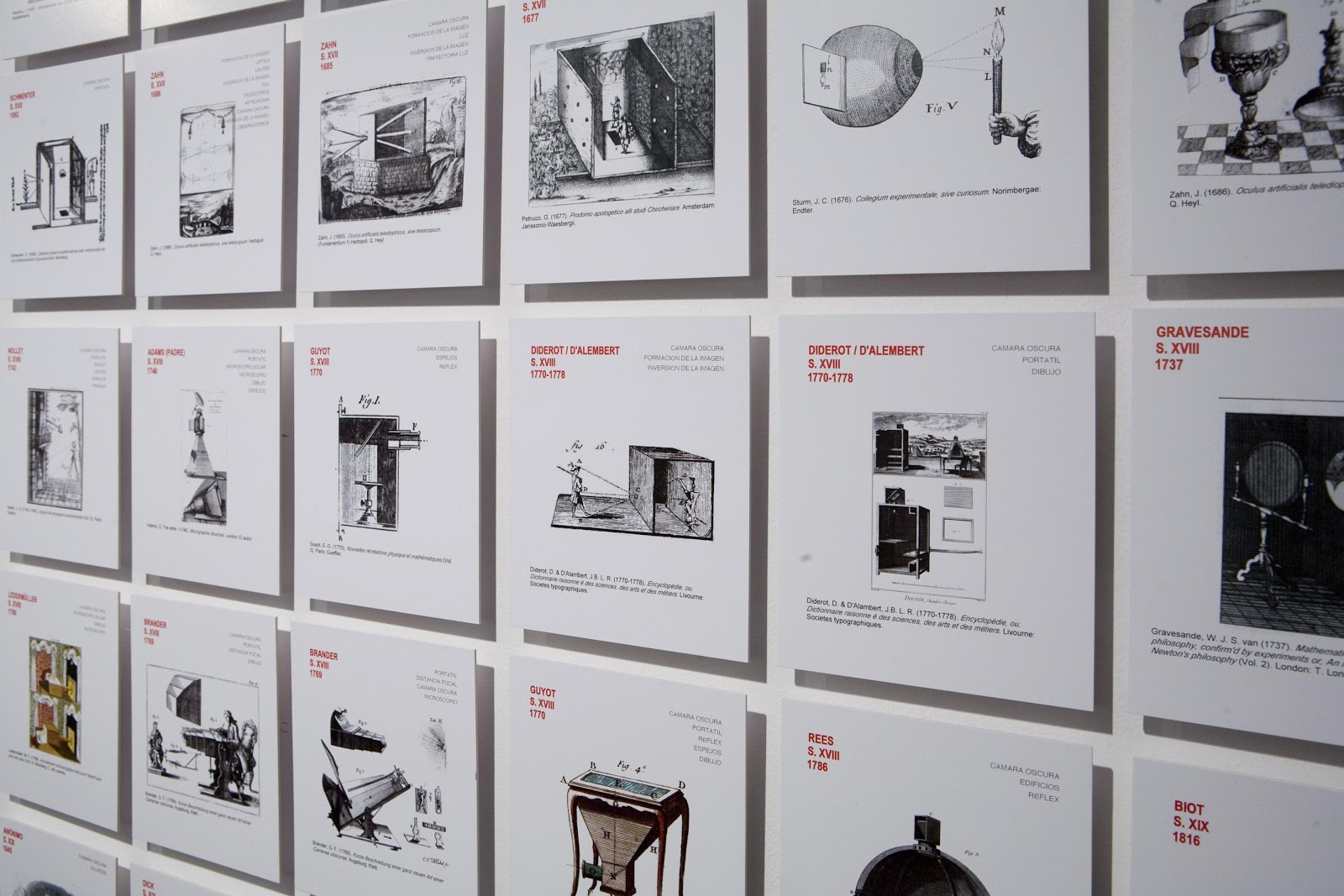
View of Montserrat de Pablo’s La Camara Oscura exhibition. University of Castilla-La Mancha, Cuenca, Spain. May–June 2015.
To explore the possibilities of the camera obscura and understand its uses, she worked with the historical camera held at the MPIWG.
The idea of Montserrat de Pablo’s exhibition is to show the whole process of this work. The documentary section consists of the timeline, expanded in space as a visual cartography through a selection of the illustrations related to the camera obscura. It shows the interrelationships between key milestones and brief data summarizing her story. In connection with this part of the work, the library is displaying a selection of rare MPIWG books relating to the camera obscura. Second, Montserrat de Pablo presents photographs and drawings made with the MPIWG camera obscura, interior and exterior views, a set of variations on a theme, and photographic portraits of the MPIWG staff as a “group portrait.”
A related exhibit, “Montserrat de Pablo. Cámara Oscura: Work in Progress,” was shown at the University of Castilla-La Mancha in Cuenca (January 2015) and Ciudad Real (May 2015), Spain. The MPIWG exhibition was shown at the Spanish Embassy in Berlin in fall 2016.
-
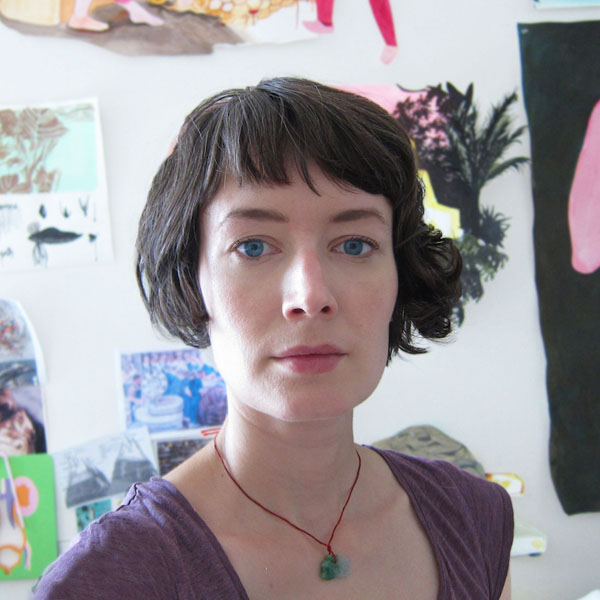 Christa Donner (2015)
Christa Donner (2015)Christa Donner, from Chicago, was a Department II Artist-in-Residence in 2015. In her project “The ReDistribution of Curiosity” she created a collection of small drawings inspired by conversations with scholars in residence. The drawings were reorganized according to her own systems of categorization, with the aim of reintroducing a sense of wonder and curiosity into the notion of the contemporary archive.
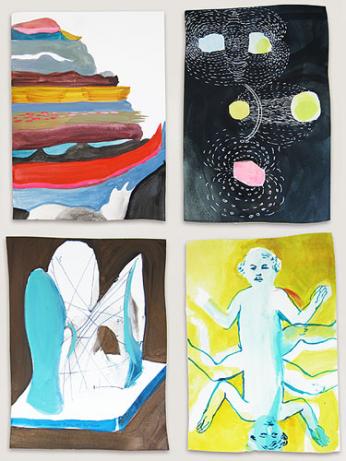
Christa Donner, selections from The ReDistribution of Curiosity, 2015, ink and acrylic on paper, 16.5 x 12.3 cm each
-
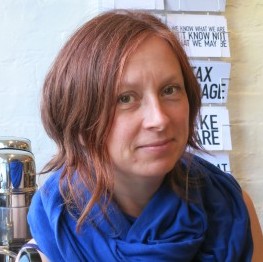 Zoë Svendsen (2014)
Zoë Svendsen (2014)Zoë Svendsen was an Artist-in-Residence in Department III in 2014. She pursues practice-led research as a Lecturer in Drama and Performance in the English Faculty at the University of Cambridge. Her practice-as-research projects focus on questions of dramaturgy and attention, with particular focus on the idea of "rehearsal" as a conceptual mode of imaginative engagement on the part of audiences when experiencing performance. Her project, “World Factory,” in collaboration with artist Simon Daw and others, explores consumer capitalism as seen through the lens of the history and politics of the global textile industry, particularly in relation to China.
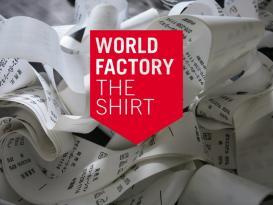
World Factory.
-
Katrin von Lehmann (2012/2013)
Berlin-based artist Katrin von Lehmann was a guest at the Max Planck Research Group “Twentieth-century Histories of Knowledge About Human Variation.” During her stay, she worked on the project “Looking at Diversity,” which reflected on the process of making diversity visible in science, in the summer of 2013. It also culminated in a Virtual Exhibition, “Looking at Diversity.”
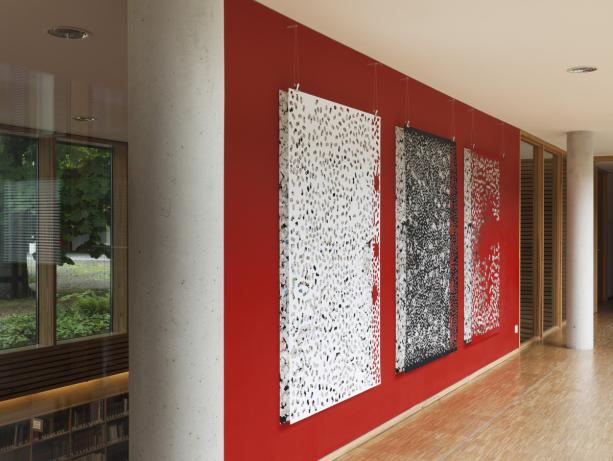
Blick auf Vielfalt, Serie 3. Photo: Bernd Hiepe.
-
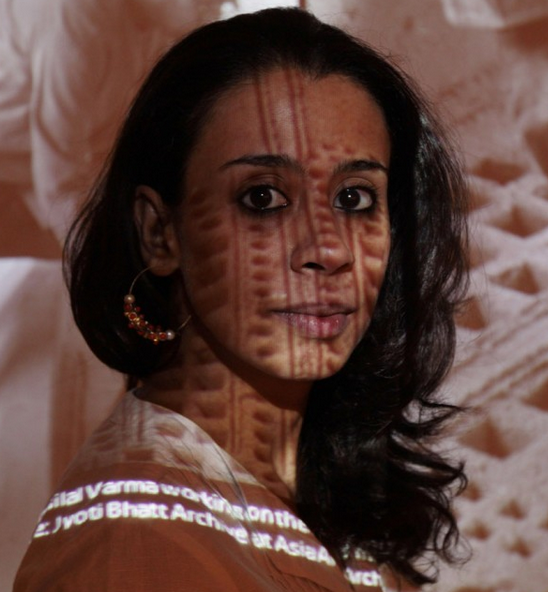 Rohini Devasher (2012)
Rohini Devasher (2012)The Indian artist Rohini Devasher was an Artist-in-Residence in Department II in 2012. She explored the interface between art practice and science, specifically drawing and astronomy, through the lens of metaphor and worked on the mural “Parts Unknown,” now on display at the MPIWG.

Artwork by Rohini Devasher.

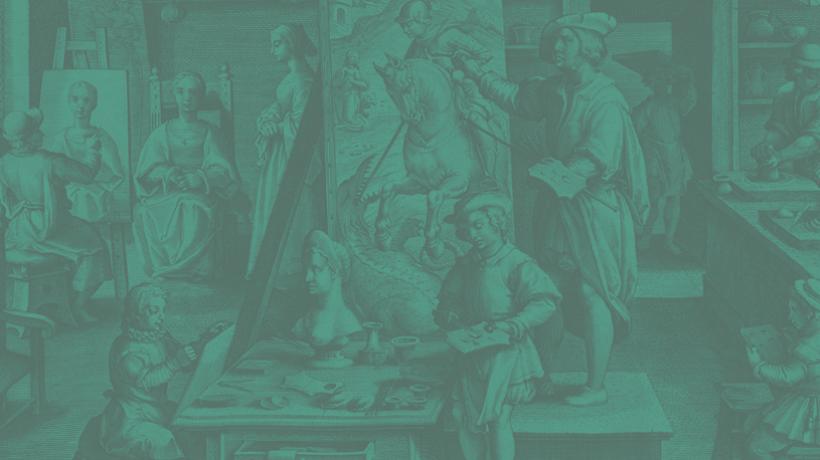 Icon
Icon